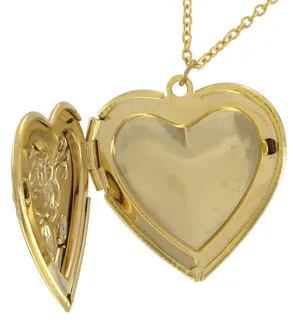A locket is an item of jewellery with a compartment or locket that may be opened to reveal a small keepsake such as a charm, a lock of hair, or a picture of a dear one. You can wear a locket on your neck, finger, or wrist. Most of us keep them on a necklace close to our hearts.
You can even come across a number of lockets being used to hide poison.
In the past, lockets were given as presents on Valentine’s Day, birthdays, religious events, weddings, and, beginning with the reign of Queen Victoria, even during funerals.
Check out the latest collection of diamond rings.
An Overview of Locket’s History
It’s safe to assume that most people have heard about locket pendants before. A small percentage of the population, however, is aware of the fascinating backstory of this diamond. It’s natural to wonder what fuelled the huge increase in locket popularity that occurred across so many periods and cultures. The development of lockets spans several centuries.
The 1400s
Lockets were worn in many forms, such as rings, brooches, and necklaces, during this time period. Various items are stored within the locket by their respective owners. People often keep photographs, rare stones, herbs, amulets, etc., in their lockets. Aroma lockets were also commercially accessible during this time period. The lockets served as a form of perfume, with the secret ingredient typically being some sort of scented item placed within the locket.
The 1600s
Upon his death in the 1600s, Charles I of England’s loyal subjects began carrying pictures of him in their lockets as a symbol of their devotion. Pictures of the deceased kept in lockets were all the rage during this time period. Mourning Jewelry was a term coined to describe the era’s fad for wearing lockets as a way to honour the dead.
The 1700s
In the 1700s, mourning jewellery gained popularity. Many people who had lost family members or friends began wearing lockets as a way to keep them close to their hearts. Their loved ones’ pictures were safely locked away in these pendants.
The 1800s
After Prince Albert died, the queen wore a locket with his photo in it as a token of their love. She continued to use it long after her grief had subsided. From then on, lockets stopped being strictly associated with death and started being worn as a trendy accessory.
The Victorian era saw the golden age of the locket. They had eight children, and Prince Albert gave his beloved Queen Victoria a bracelet with eight lockets on it, each of which held a lock of hair from one of their offspring. After Albert passed away, Queen Victoria wore a huge mourning locket with a photo of him on one side and a lock of his hair on the other.
The entire country was obligated to dress in sombre black during this time. Therefore, lockets were the best option for adding flair to the otherwise boring uniform. There was a wide variety of lockets worn throughout this time, from those with no decorations to those studded with precious stones.
Throughout the centuries and even today, people have used lockets to store:
- A lock of hair
- A picture
- A short love letter
- Good-luck charms
- Herbs
- Medicine
- Piece of paper with significant text on it
Lockets from the past and the present usually show a picture of a special person or a member of the wearer’s family.
What Do Lockets Represent?
The idea of a locket is to protect and treasure something irreplaceable, such as a loved one’s photo or a memorable moment in time. When we want to show our love for someone forever, we present them with a locket. We add a note or a picture of them inside of them. The use of lockets and diamond rings, which have been around for centuries, has recently had a fashion comeback.
It’s not uncommon for lockets to have secret messages coded into their colours. As a symbol of their love and devotion, couples may also choose to wear lockets rather than rings. A sweet romantic gesture for couples is to display a photo of their loved one beside a heartfelt note.





